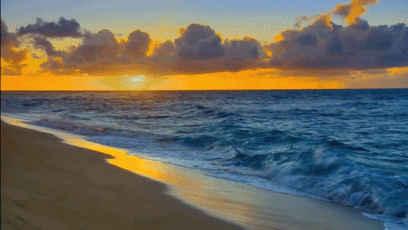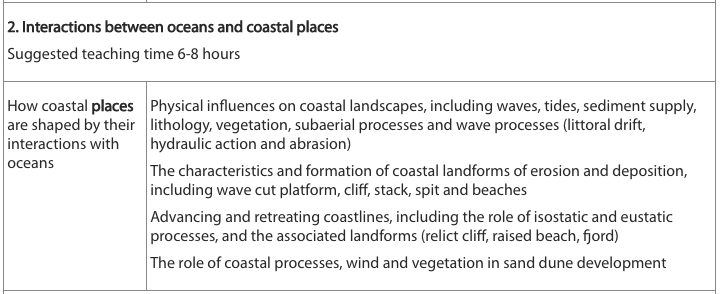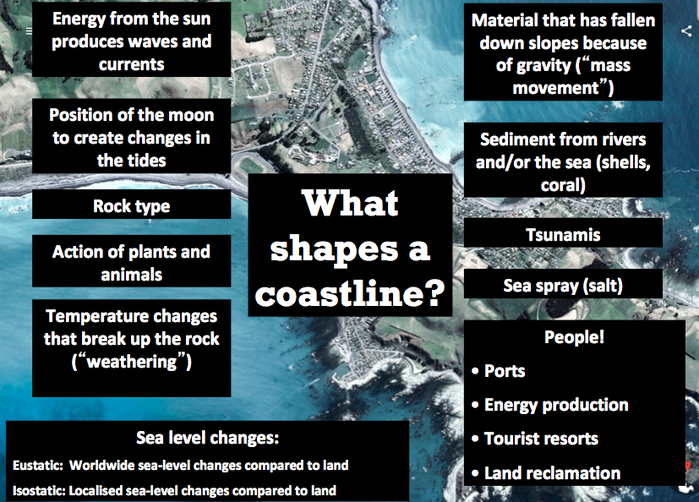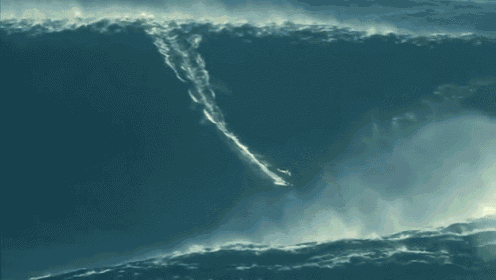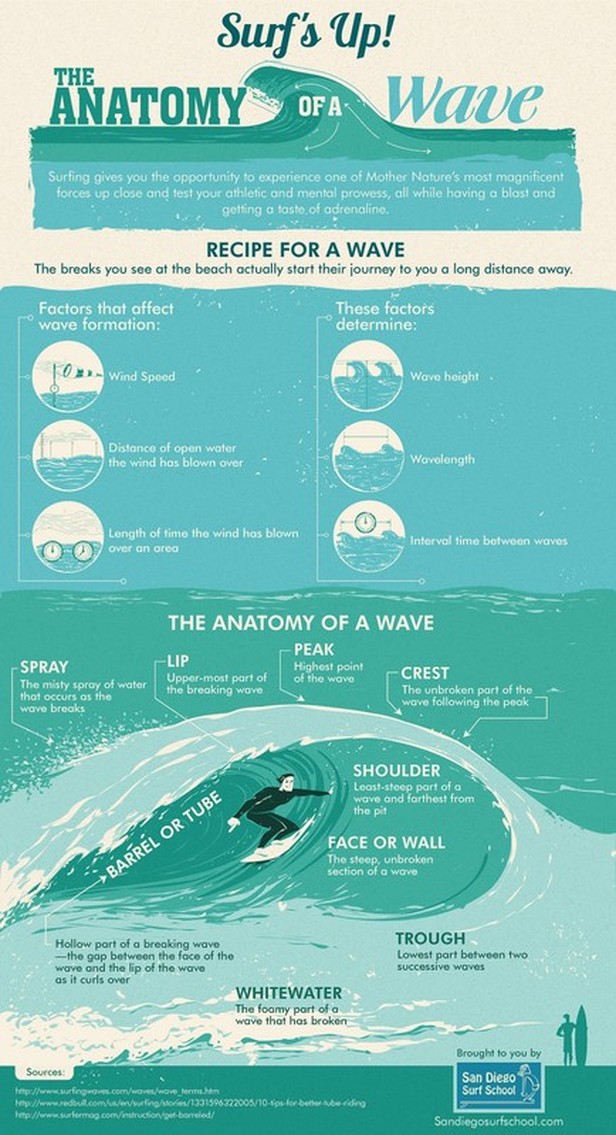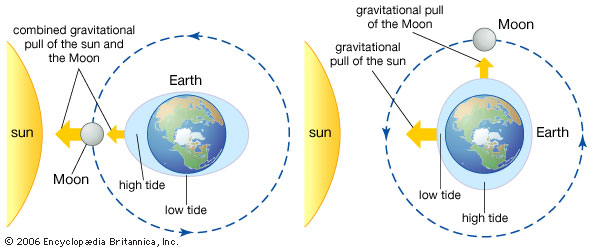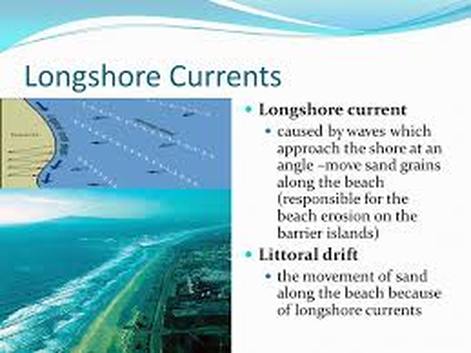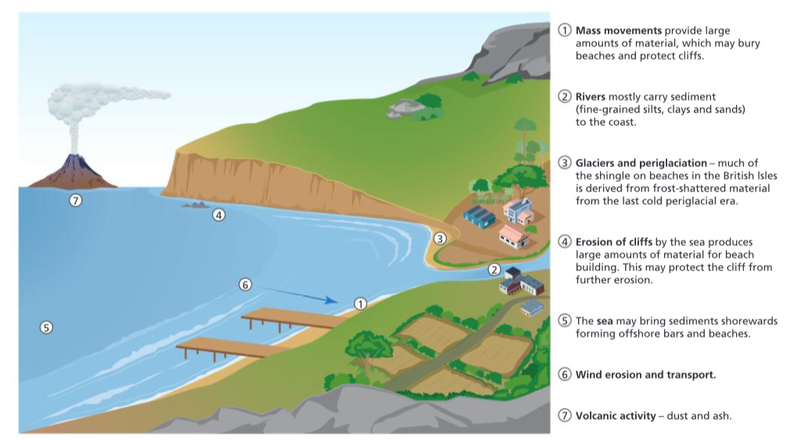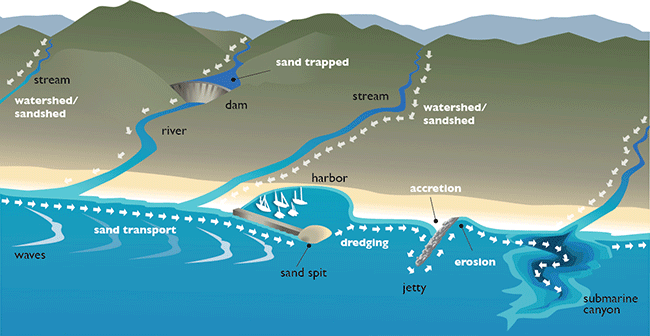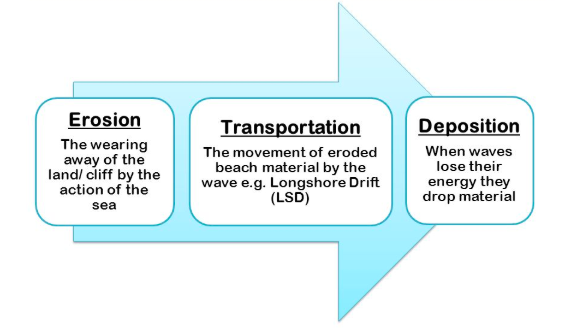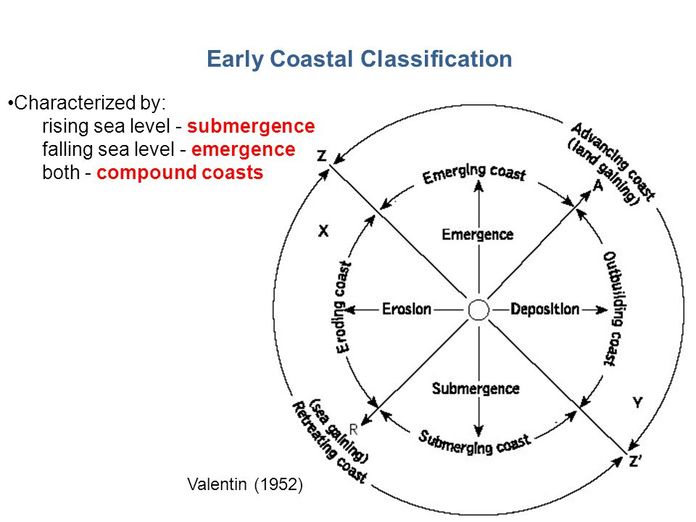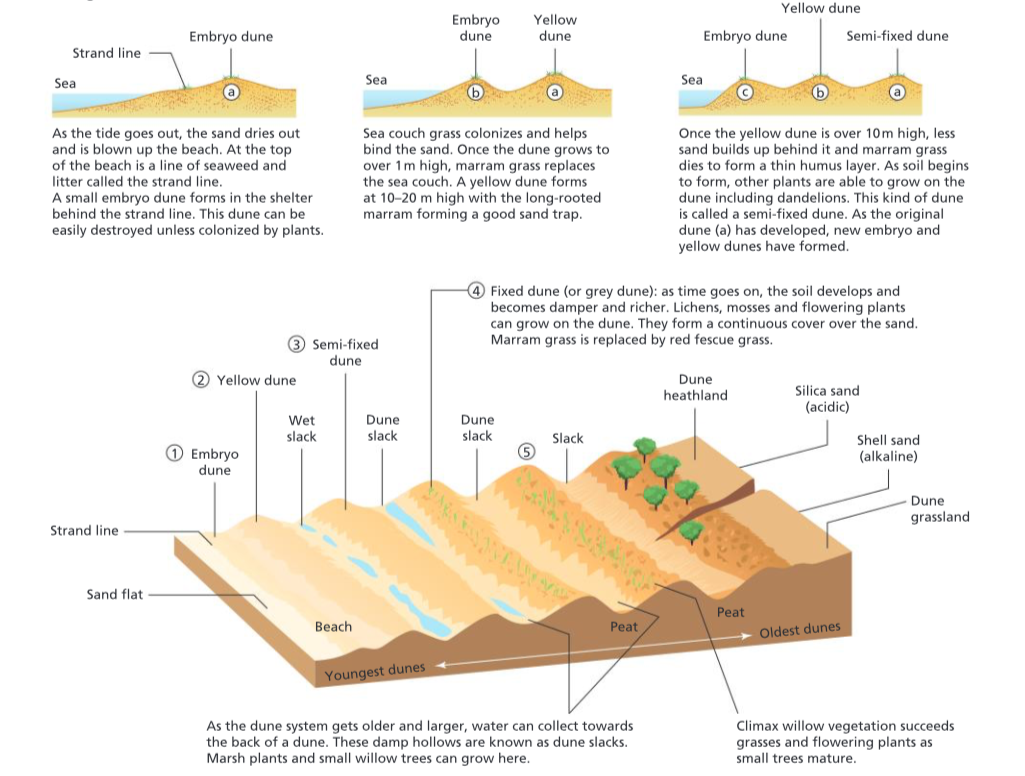2. Interactions between oceans and coastal places
Syllabus Link: How coastal places are shaped by their interactions with oceans
Physical Influences on Coasts
Physical influences on coastal landscapes, including waves, tides, sediment supply, lithology, vegetation, subaerial processes and wave processes (littoral drift, hydraulic action and abrasion)
Waves
|
|
|
|
Reading: Waves explained
Website: BBC Bitesized - Waves
Website: Fundamentals of waves
Website: Behaviour of waves
|
|
|
Tides
Littoral Currents
|
|
|
Worksheet: Physical influences on coastlines #2
Video: Coast processes explained
Website: BBC bite sized - Coastal processes
Website: Coastal processes
Sediment Supply
Wave Erosion Processes
Video: Marine erosion processes explained
Website: Marine processes
Video: Exam practice - Explaining a coastal process using a diagram
Landforms of Erosion & Deposition
The characteristics and formation of coastal landforms of erosion and deposition, including wave cut platform, cliff, stack, spit and beaches.
Activity: Can Detective Geo Morph shape up?
Webpage: BBC Bitesized - Landforms of erosion
Webpage: BBC Bitesized - Landforms of deposition
Reading: Coasts of erosion and deposition
Changes in Sea Level
Advancing and retreating coastlines, including the role of isostatic and eustatic processes, and the associated landforms (relict cliff, raised beach, fjord)
Article: 3 degrees of warming will leave cities below sea level
Article: Melting ice sheets are hastening sea level rise
Article: Global sea levels to rise by up to 1.2 metres
Article: With rising sea levels Bangkok struggles to stay afloat
|
|
|
|
|
|
|
|
Sand Dune Development
The role of coastal processes, wind and vegetation in sand dune development
Reading: Sand dune formation
Video: Sand dune formation
Activity: Sand dune formation story board
Reading: Sand dune geofacts
Video: Sand dune formation practice question
Video: Sand dune formation
Activity: Sand dune formation story board
Reading: Sand dune geofacts
Video: Sand dune formation practice question
|
|
|
|
